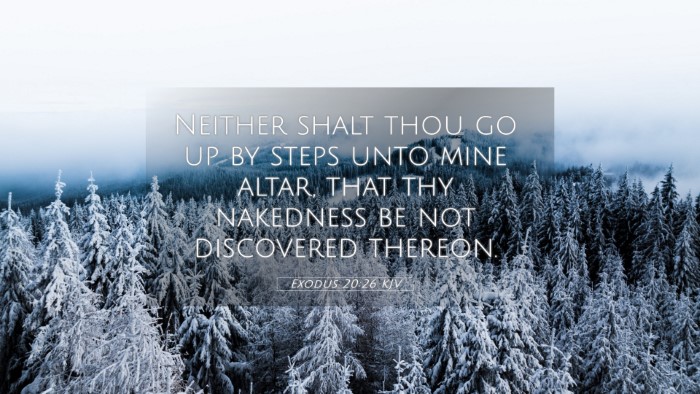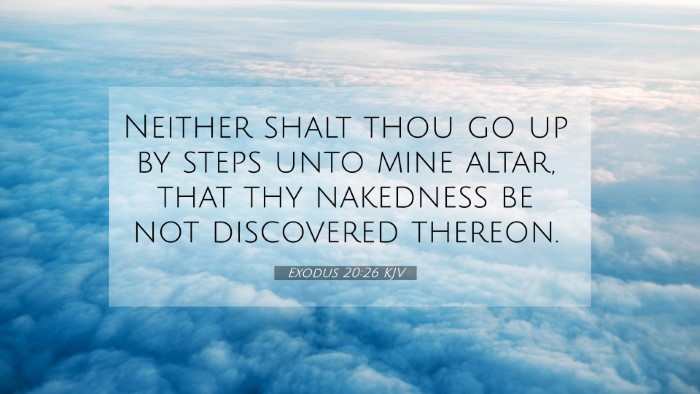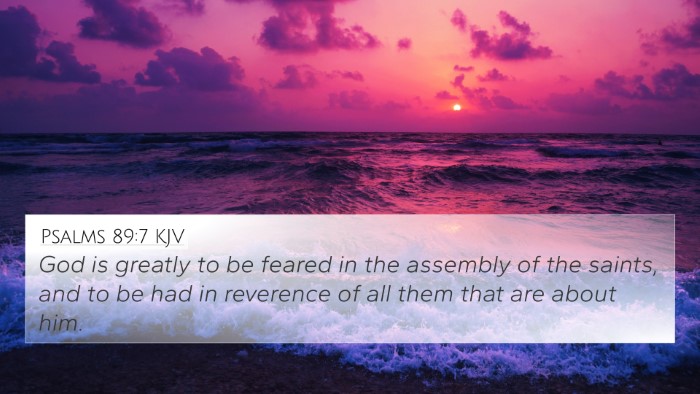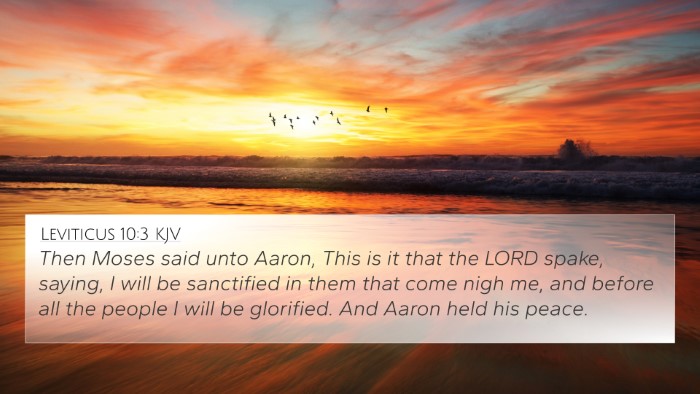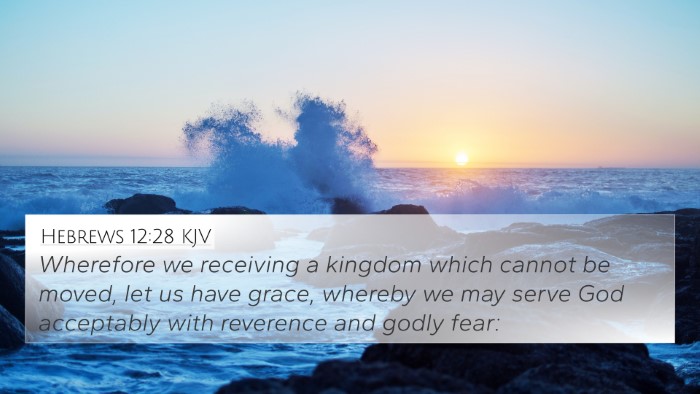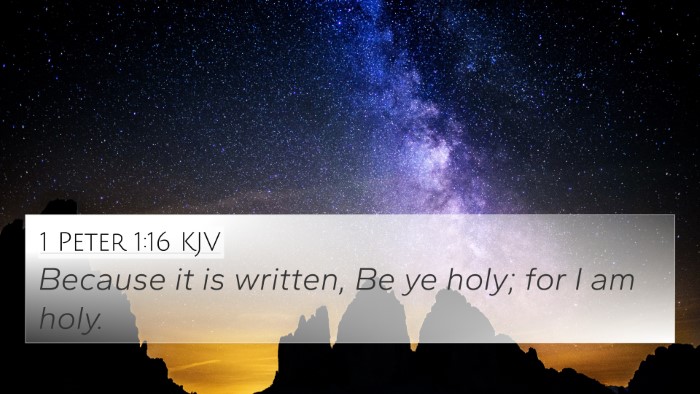Understanding Exodus 20:26
Exodus 20:26 states, "Neither shalt thou go up by steps unto mine altar, that thy nakedness be not discovered thereon." This verse is part of the instructions given to the Israelites regarding the construction of the altar and the manner in which they are to approach it.
Summary of Meaning
This verse emphasizes God's concern for holiness and propriety in worship practices. The directive against using steps to approach the altar serves as a symbolic reminder that God desires purity, humility, and respect in worship, ensuring that no form of indecency occurs during the act of offering sacrifices to Him.
Insights from Public Domain Commentaries
Matthew Henry's Commentary elaborates that the prohibition against steps indicates that God wants His worship to be respectful and free from any shameful display. The concern for the priests' attire and their nakedness reflects a broader biblical theme of maintaining holiness before God.
Albert Barnes' Notes suggest that the construction of the altar and the related commandments convey God's desire for a barrier between the sacred and the profane. Barnes highlights that the design of the altar should foster a sense of reverence, making the worship experience meaningful and honorable.
Adam Clarke's Commentary points out that this command connects closely with concepts of modesty and respect in worship. Clarke adds that the physical act of worship should not only be about the rituals but also about the inner disposition of the worshiper, indicating that modesty leads to true reverence.
Biblical Cross-References
- Exodus 20:23: Represents God's directive on how to worship Him properly and to avoid idolatry.
- Exodus 28:42: Discusses garment regulations for the priests to avoid shame.
- Leviticus 10:3: Highlights the holiness of God's presence and the seriousness with which He allows worship.
- Matthew 5:28: Jesus emphasizes the internal aspect of purity and modesty.
- 1 Timothy 2:9-10: Instructions on how women should adorn themselves in a modest manner, reflecting the biblical theme of propriety.
- 1 Peter 3:3-4: Encouragement for believers to prioritize inner beauty over outward adornment.
- Hebrews 12:14: Calls believers to pursue holiness, resonating with the directives found in Exodus.
Thematic Connections
The verse highlights various themes prevalent throughout Scripture, particularly regarding worship, holiness, and the nature of God’s relationship with His people. It serves as a reminder of the importance of approaching God with the right heart and intentions.
Cross-Referencing Techniques
Understanding how to connect Exodus 20:26 with other verses enhances our comprehension of Biblical text and its themes.
Tools for Bible Cross-Referencing
- Bible Concordance: A helpful resource for finding words and their occurrences in Scripture.
- Bible Cross-Reference Guide: An organized way to locate verses that are thematically linked.
- Cross-Reference Bible Study: A method to identify thematic connections during study sessions.
- Comprehensive Bible Cross-Reference Materials: Provides insights across different sections of Scripture.
Application of Cross-Referencing
When studying any Bible verse, including Exodus 20:26, it is crucial to:
- Identify connections between Old and New Testament: This reveals the continuity of God's message across different scriptures.
- Analyze the context of biblical themes: Linking scriptures helps in understanding the unfolding narrative of God's work through history.
- Utilize cross-referencing for sermon preparation: Being well-versed in related scriptures can enhance teaching and preaching effectiveness.
Conclusion
Exodus 20:26 serves as a significant instruction on maintaining purity and propriety in worship. Through cross-referencing this verse with others, believers can gain a richer understanding of God's expectations in the pursuit of holiness. As we explore these connections, we not only deepen our personal study but enhance our collective understanding of biblical truths.

